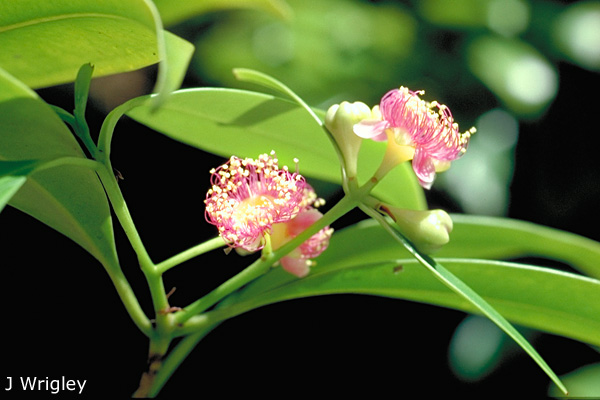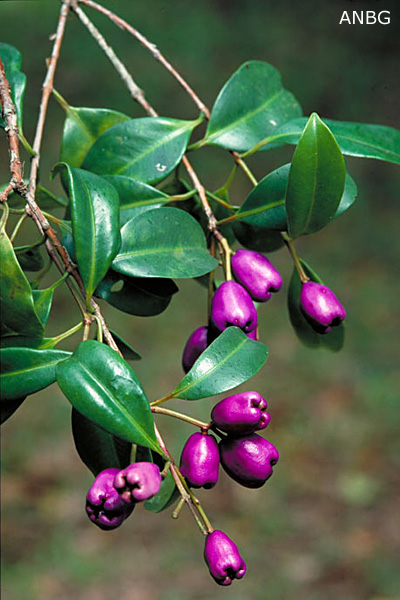General Description:
Syzygium is a genus of over 1000 species occurring in tropical and subtropical rainforests. There are about 50 species in Australia occurring in the Kimberly region of Western Australia, the Northern Territory, Queensland and northern New South Wales. The genus includes species previously classified in the genus Acmena as well as a number previously classified as Eugenia.
Syzygium papyraceum is a medium to tall tree to 15-20 metres high with an orange/red, flaky bark. The leaves are glossy green and lance-shaped to about 70 mm long, tapering to a distinct point. The flowers are mauve to pink and seen in Spring. They are followed by elongated purple fruits about 20 mm long which are edible.
Despite its origin in tropical areas, S. papyraceum can be grown in temperate and subtropical climates. It is an attractive shade tree which prefers rich soils and assured moisture in sun or dappled shade. Like other species of Syzygium, scale infestations are occasionally observed. This can be controlled by the use of white oil.
Propagation may be carried out from fresh seed, either by sowing the fruits whole or after removing the flesh. Germination may be slow and spasmodic. The species can also be grown from cuttings of firm, current season’s growth.

Flowers and foliage of Syzygium papyraceum
Photo: John Wrigley

 Australian Native Plants Society (Australia)
Australian Native Plants Society (Australia)